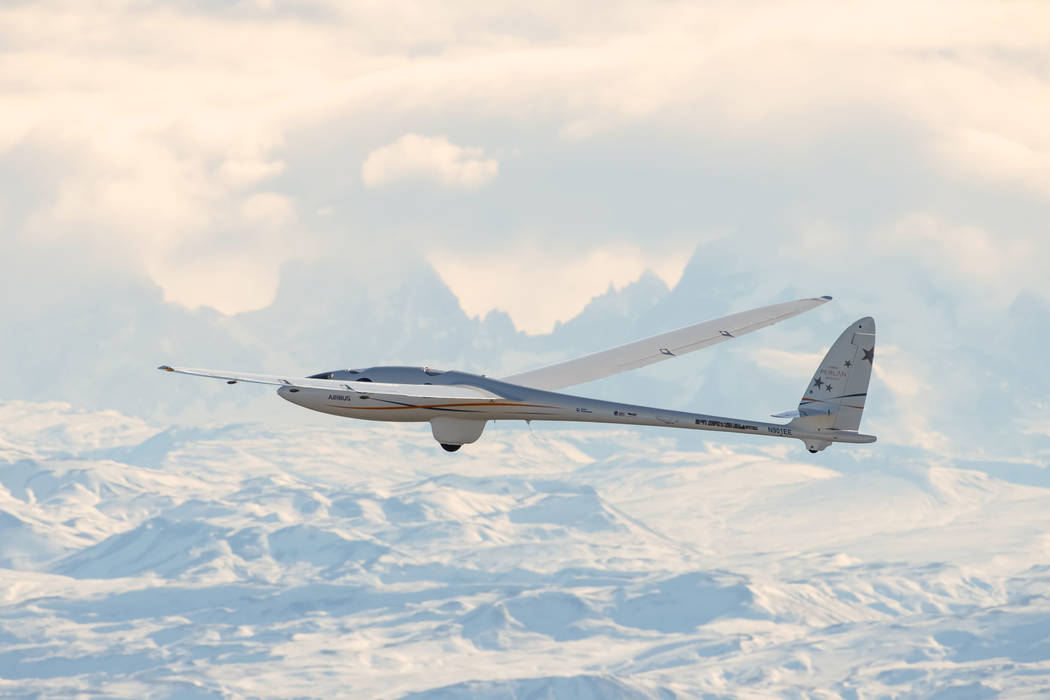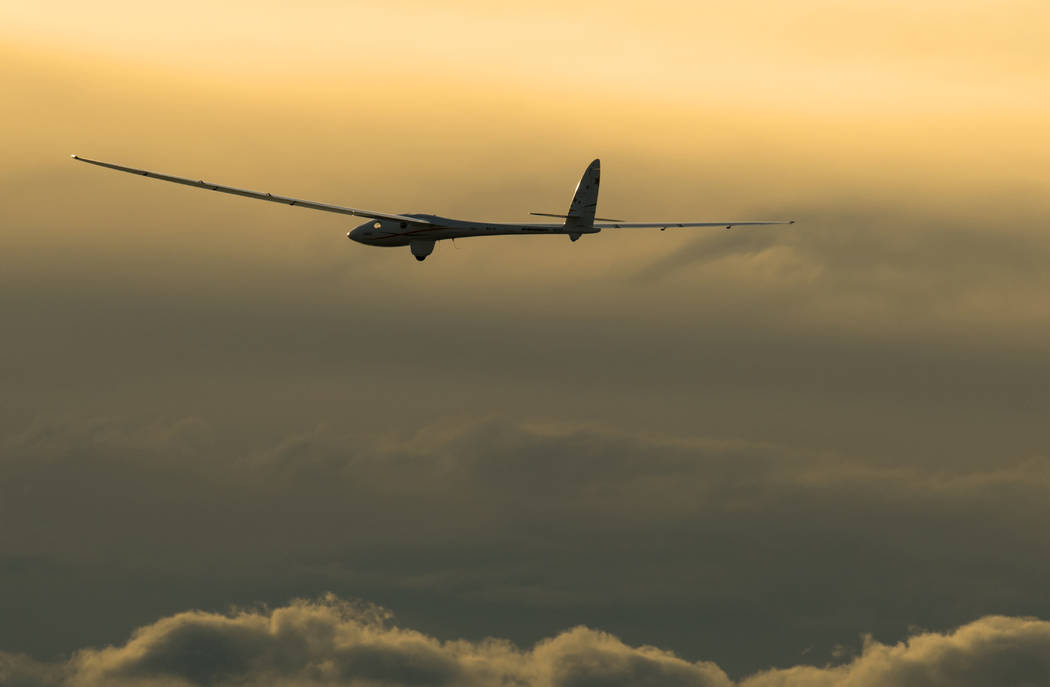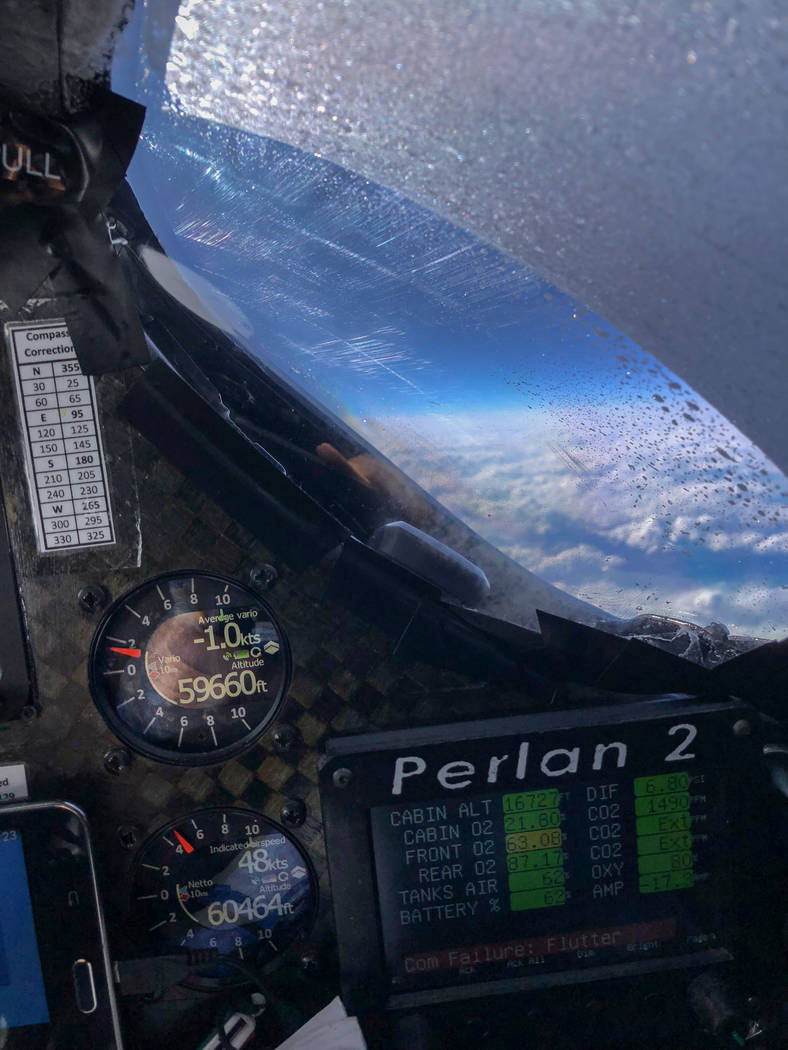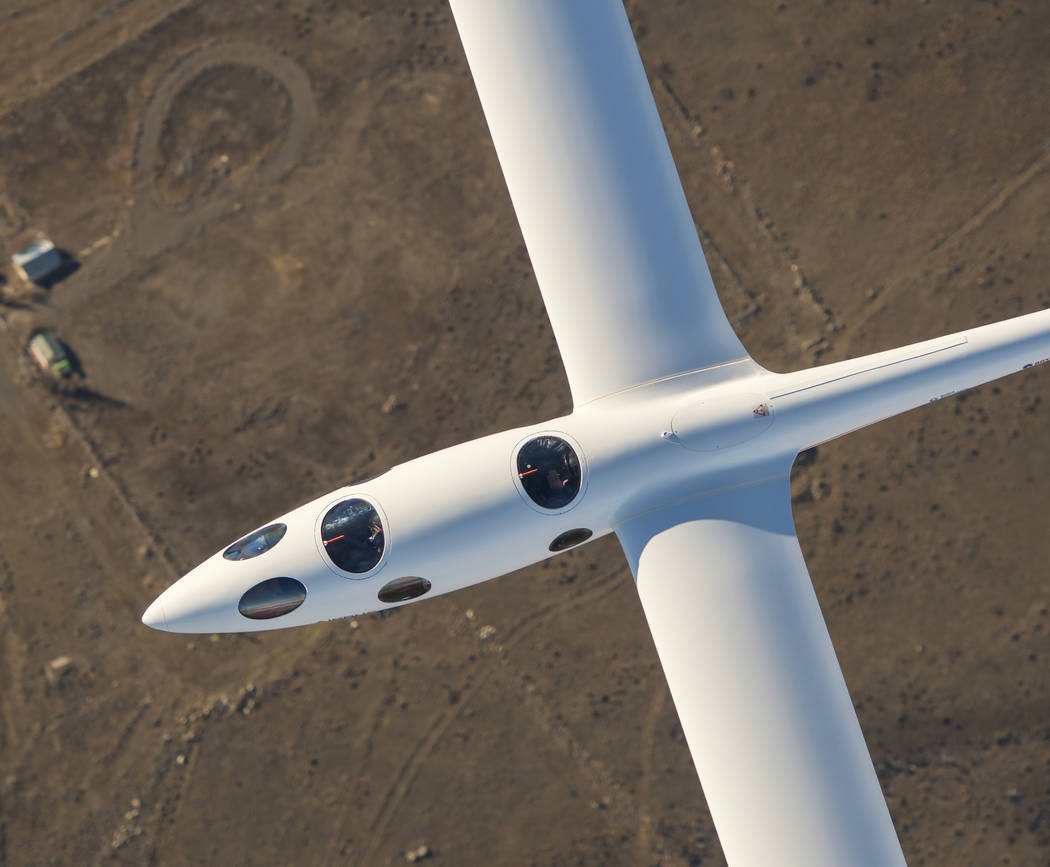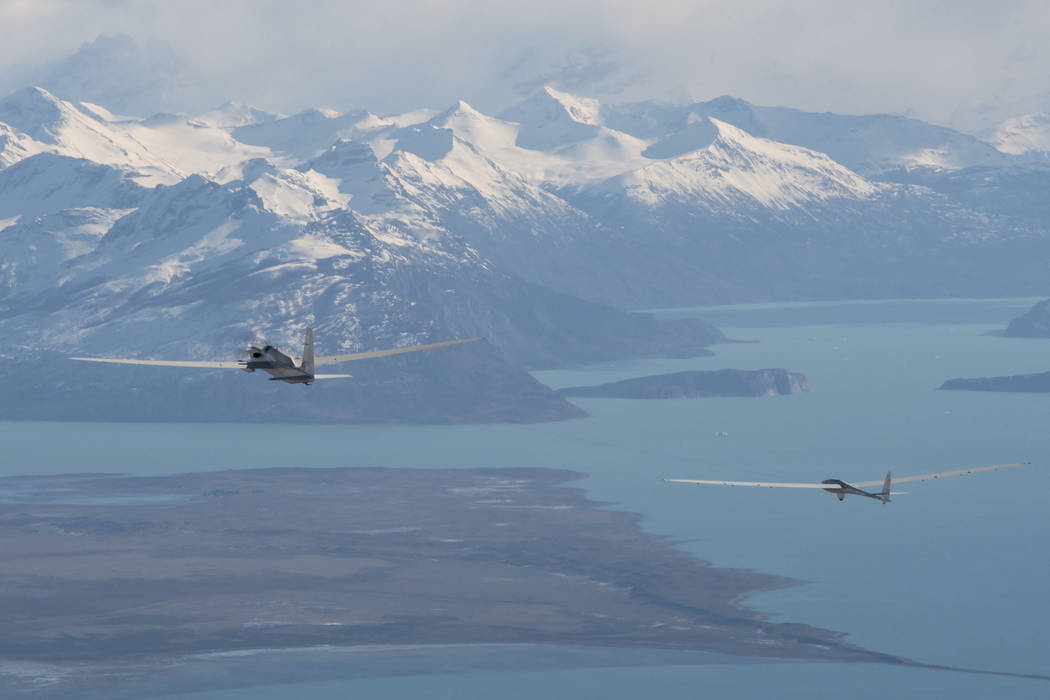Nevada team flies glider to world record in South America
Using wind as their engine, pilots from a Nevada glider team have soared to record heights above the Andes Mountains in Argentina.
An experimental sailplane built by the Minden-based Perlan Project team set an unofficial world altitude record for engineless flight on Sunday, then broke that record by more than a half-mile two days later.
Pilots Jim Payne and Miguel Iturmendi coaxed the Perlan 2 aircraft to 63,776 feet on Tuesday, 3,107 feet higher than Sunday’s flight by Payne and Morgan Sandercock.
That’s roughly 3 miles above the highest altitude used by commercial flights.
At that altitude, “the sky is starting to get dark” and you can see the curve of the Earth, Payne said Thursday by phone from Argentina. “You get some beautiful vistas from up there.”
Payne and Sandercock also own the current official record of 52,221 feet, which they reached in Perlan 2 above the Andes on Sept. 3, 2017.
That flight broke the previous mark of 50,724 feet set by Perlan Project founder Einar Enevoldson and renowned aviator Steve Fossett in 2006, one year before Fossett died in a plane crash near the Nevada-California border.
Enevoldson and Fossett achieved their record altitude in Perlan 1, an earlier, unpressurized version of the glider now soaring to new heights over South America.
The addition of a pressurized cabin to the design was a must, Payne said. During last week’s record ascents, Perlan 2 and its pilots crossed the so-called Armstrong Line, the point in the atmosphere at which blood begins to boil in an unprotected human.
The team is flying out of El Calafate in southern Argentina to take advantage of a rare and fleeting weather phenomenon known as stratospheric mountain waves, basically rising air currents behind mountain ranges that are strengthened by the polar vortex. For a few weeks each year, the air currents in the Andes around El Calafate can rise to an altitude of 100,000 feet for more.
Payne compared flying in the waves to surfing on invisible three-dimensional breakers.
Tuesday’s flight lasted just more than five hours. A special high-altitude tow plane towed the Perlan 2 to about 40,000 feet and released it to ride the stratospheric waves more than 20,000 feet higher.
It took about two-and- a-half hours for the glider to reach its record-setting altitude.
Payne said Perlan 2 can climb more quickly than that, but these are test flights so they are ascending in stages to get a readout on how the aircraft is performing.
“We’re testing just the way the Air Force would,” he said.
Payne and company hope to keep pushing the altitude record higher between now and Sept. 15, when they will wrap up operations and return to the U.S.
Their next flight is scheduled for Sunday, weather permitting.
“We got 3 inches of snow yesterday. It’s definitely winter down here,” said Payne, who moved to Minden in Northern Nevada after retiring from the aerospace industry in Southern California.
Gliding through life
Perlan 2 was built in Oregon and operates out of the airport in Minden, about 45 miles south of Reno, with support from the European aerospace company Airbus and other sponsors.
The sailplane weighs about 2,000 pounds, with an 84-foot wingspan and an emergency parachute capable of bringing the entire aircraft safely to the ground.
The glider is designed to soar up to 90,000 feet, and Payne thinks it might just get there some day.
“It’s kind of like a cross between a spaceship and an F-16,” he said.
Its airtight cockpit and the helmets the pilots wear make it the quietest glider Payne has ever flown.
The former military test pilot first learned to fly in a glider at the Air Force Academy in 1971, and went on to become a world champion sailplane pilot.
The longest flight he ever made in an aircraft with no engine covered more than 1,800 miles and included three round trips between Reno and Mojave, California, over a 12-hour span.
By comparison, Payne’s flights over the Andes go nowhere but up. During the tests, the Perlan 2 never strays more than about 60 nautical miles from the airport in El Calafate.
As the glider flies into the wind — making long, straight passes back and forth across the stratospheric wave — it can appear from the ground to be hovering in place or even moving backward.
Payne said there are times when the aircraft actually does move in reverse, at least in relationship to the ground, because the wind it is flying into is faster than its airspeed.
Record under review
Because it has no engines pouring heat and exhaust into the air around it, Perlan 2 doubles as a platform for atmospheric research.
Right now, the aircraft is carrying instruments and experiments created by the project team and by schools and organizations in the U.S. and Argentina, including one developed for preschoolers by the Oregon Museum of Science & Discovery called “Marshmallows in Space.”
Perlan 2’s altitude record will remain unofficial until it is reviewed and accepted by the National Aeronautic Association and the Federation Aeronautique Internationale, a Switzerland-based equivalent of the Guinness World Records for aviation.
It took almost a year for the FAI to sign off on the team’s 2017 world altitude record.
Payne said that mark finally became official about a week ago, just in time to be broken.
Contact Henry Brean at hbrean@reviewjournal.com or 702-383-0350. Follow @RefriedBrean on Twitter.
Follow the flights
The Nevada-based team behind the Perlan 2 glider hopes to reach new record high altitudes as test flights continue above the Andes Mountains in southern Argentina through Sept. 15.
Anyone interested in following along with future flights can sign up for alerts and tune in online.
Updates are also available from @PerlanProjecton on Twitter and Facebook.



